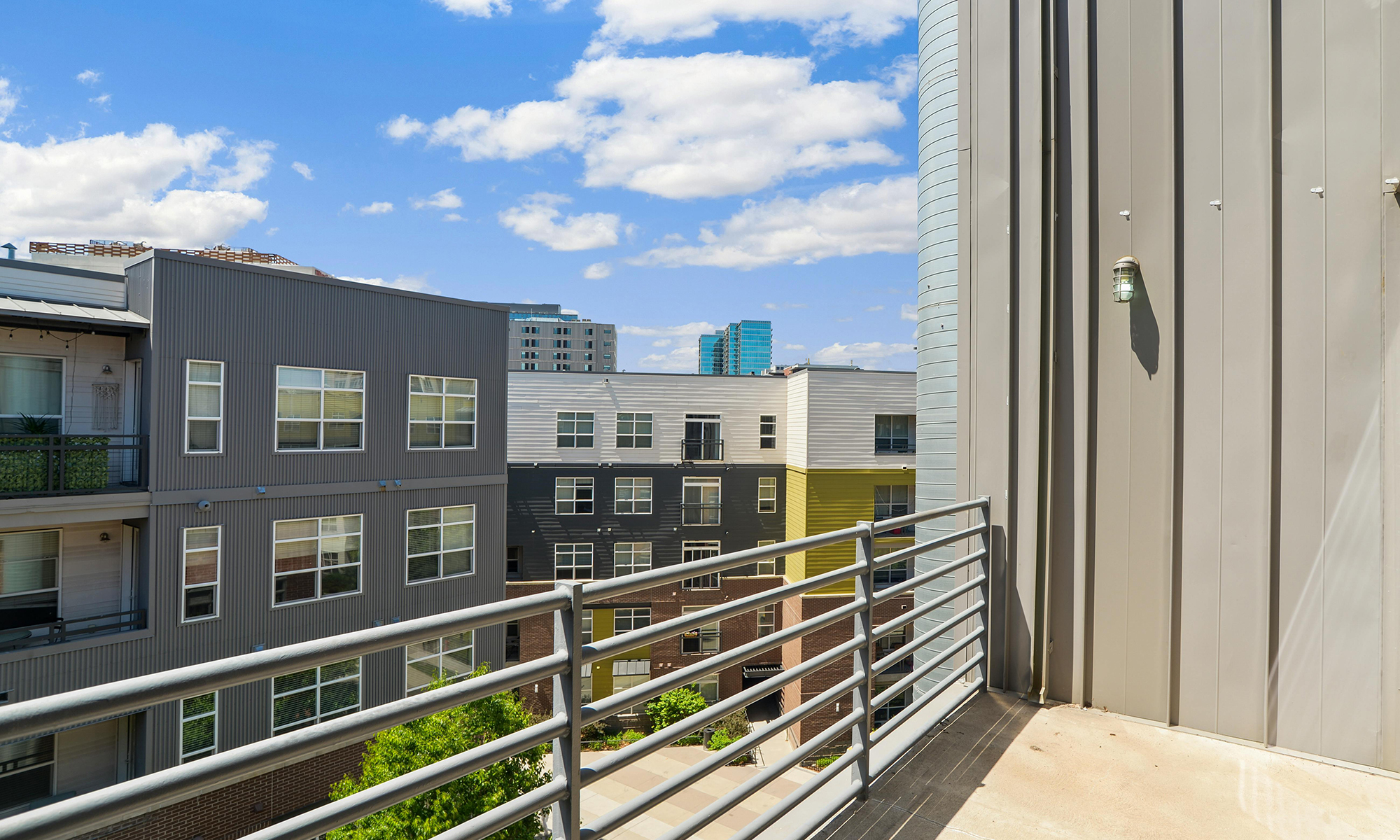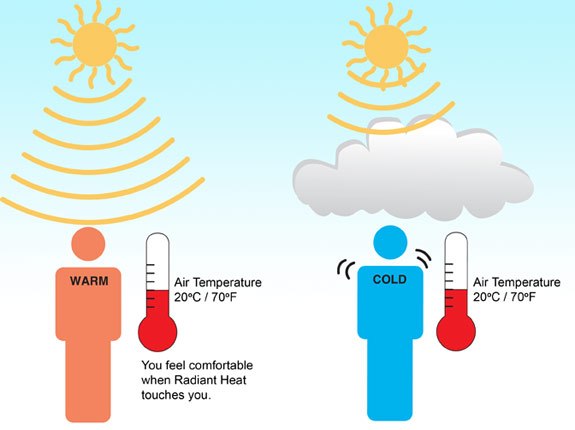

Blog
Comfort and health can be vague topics with many different definitions. Physically, there are four main factors that contribute to thermal comfort inside a residence, all of which also tie into health.

Imagine it’s Christmas morning. You wake up from a nice sleep eager to spend time with family and open presents. You can’t wait to get out of bed but know that the warmth you have under the covers will soon escape into your cold, drafty apartment. The window doesn’t close that well, and the baseboard heater can never quite get up to the desired temperature. Now you’re cold. Your body is working harder to warm you, so now you’re tired too. Your only comfort is the idea of sitting by a fire soon with a cup of hot cocoa… except it’s not actually Christmas. It’s just a normal day, and you’re cold…again.
For most of us, feeling cold is simply just uncomfortable and may decrease our productivity. However, for the elderly being cold can lead to health problems, organ failure, and even hypothermia. Seniors who are chronically cold during the winter may not even know the toll their discomfort is causing to their health, and they may require a more adequate living environment to keep them safe.
When preparing for the development of a new senior residence, it is important to take into consideration the needs of the senior demographic during the design phase. Keeping our seniors safe is one of the biggest priorities for senior living facilities, not only when it comes to ADA compliant and accessible living conditions, but also regarding tenant comfort and health.
Comfort and health can be vague topics with many different definitions. Physically, there are four main factors that contribute to thermal comfort inside a residence, all of which also tie into health:
1. Mean Radiant Temperature – Surface temperature of the space you’re in that your body needs to offset
Indoor mean radiant temperature is influenced by environmental factors, as well as the thermal performance of all buildings. This is particularly significant in senior housing design, which benefits from increased R-values of envelope insulation, high efficiency windows with low emittance glazing applied, and high albedo site finishes. Maintaining the characteristics of the internal environment is important not only from an energy efficiency standpoint, but for comfort as well. Even if you have superior envelope insulation, if it is paired with low efficiency windows, the overall U-factor of the wall assembly is decreased, and comfort is much more difficult to maintain.

2. Air Temperature – The sensible temperature that we feel
Seniors are often more sensitive to temperature. Having control over their environments with tenant-controlled thermostats, can vastly improve overall comfort. While heating and cooling equipment is required to be properly sized by the project engineer, comfort varies by person, and providing tenants the ability to control the air temperature of each room will be highly beneficial to overall comfort and health.
Studies have shown that warmer environments lead to increased happiness. When air temperature is in the “dead band” range and the space doesn’t need to be heated nor cooled, our bodies don’t need to work as hard to regulate our internal temperatures. This means we retain more energy and we’re not as susceptible to certain infections.
3. Air Movement – Is air blowing through rooms in the building? Are there drafts? How air-tight is the building?
As noted above, seniors tend to be more sensitive to room temperature, and having air blowing is not going to improve comfort. Designers can estimate the expected air leakage rate of the building to properly size HVAC equipment. The International Energy Conservation Code (IECC) requires air leakage to remain at or below 0.40 cubic feet per minute per square foot (cfm/sf at 75Pa) while the PHIUS Passive House standard requires building tightness to be 1% of that (0.004 cfm/sf). The tighter the building is, the less unexpected air movement there will be, which in turn allows for lower capacity heating and cooling systems. That said, a tighter building requires a greater level of ventilation to prevent stale, stagnant air.
As it relates to indoor air quality, even more now with COVID, the tighter the building envelope, the higher the need for increased outdoor air supply and exhaust ventilation. This includes unit to unit compartmentalization to prevent any cross-contamination. See the table below from the CDC, which details ACH (air changes per hour) and the amount of time required to remove airborne contaminants:

4. Relative Humidity – The moisture content in the air, commonly between 40% and 60%
Permanently installed dehumidification equipment can be costly and often unnecessary, depending on climate zone. So, having options for moisture sensors and dehumidification can increase tenant comfort and health, considering that too low humidity can irritate and dry the eyes, skin, and impact the respiratory system and too high humidity can lead to mold growth and allergy problems. Both scenarios can lead to serious health impacts, such as illness, infection, or even heart problems.
In addition to the four factors discussed, there are two more that contribute to physical comfort that don’t directly relate to building design: (1) clothing, aka the insulation we layer on; and, (2) physical activity level or metabolic heat, aka the amount of heat we generate relative to the space we are in. There is one more important factor, however, not detailed in this list – equipment selection.
Engineers and designers can choose to implement high efficiency unitized systems, cheap and low-efficiency central systems, or any combination. When evaluating the HVAC system of the building, selecting feasible and compatible high efficiency equipment will have positive impacts on indoor air quality. It is important to focus on indoor air quality goals prior to selecting the equipment to ensure the design goals will be met sustainably. Will ventilation be continuous? Will ERVs be needed? Answering these questions will improve durability of the overall system, help meet design goals, and save energy. Installing monitoring systems, such as boiler controls or unit-level temperature sensors can help to ensure the system is running smoothly. Well-designed and operating systems also result in fewer instances of tenant over-running the systems (e.g., calling for heat with the window open during winter).
When designing the mechanical systems for the building, proper ventilation and fresh air supply is crucial for indoor air quality and tenant health and many systems offer options to meet design needs. For example, typical window air conditioner units or PTACs have options for fresh air kits. If a developer decides to forego trickle vents and not ventilate via the windows, the fresh air kits are a viable option for bringing in outdoor air to replace the exhausted or stale air. Another option is providing filters, i.e., standard washable metal filters or higher-efficiency MERV or HEPA filters are helpful in trapping pollutants, bacteria, and viruses. While increased fresh air supply and exhaust ventilation will result in increased maintenance, the improved indoor air quality results in physical and mental health benefits for tenants.
…
So, whether it’s Christmas morning or just another day, it’s clear that physical comfort plays a key role in human health, specifically for our seniors. If the above factors are taken into consideration during the design phase of a new senior residence development, not only can energy be saved, but resident health can be maintained. It’s a win-win.
Contributor: Jared Forman, Sustainability Consultant
Steven Winter Associates